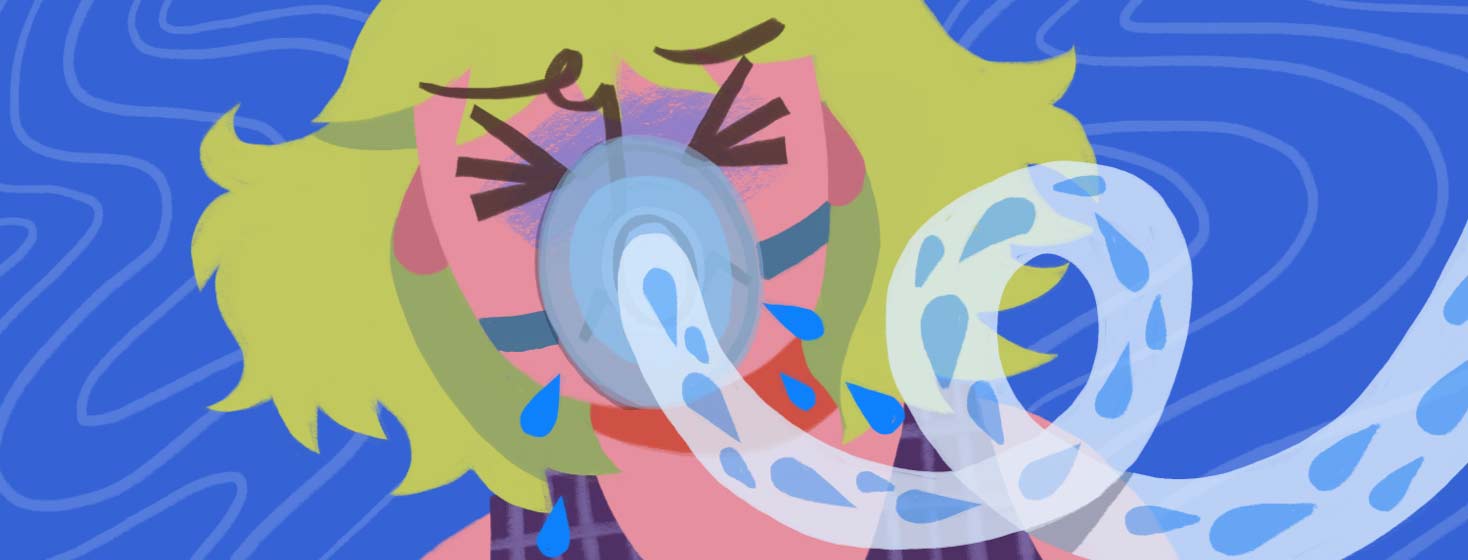What Is CPAP Rainout and How Can I Prevent It?
Using a continuous positive airway pressure (CPAP) machine is the gold standard treatment for sleep apnea. Proper use of the machine can notably improve the health of its users. Unfortunately, many people who use CPAP machines have problems with the equipment. Some problems include air leakage, awkward mask fit, discomfort, loud noises, and something called rainout.1-3
What is CPAP rainout?
Rainout is a term used for excess water buildup in CPAP tubing and mask. Have you noticed beads of water in your CPAP tubing? Have you woken up with water in your mask or a wet face? That is rainout.1-3
Condensation can form in the tubes. It can then flow from the tubes into your eyes and nose. This excess moisture might cause a gurgling sound in the tubes.1-3
Why is CPAP rainout a problem?
Rainout can cause you to wake up. You also have to dry yourself and your equipment off. By causing discomfort and interrupting sleep, rainout puts an extra burden on the person using the CPAP. Rainout is 1 more reason people may discontinue using a CPAP.1-3
What causes rainout?
To make CPAP machines more comfortable, many people use a heated humidifier. There are many benefits to using heated humidification. It can prevent airway dryness, dry mouth, sneezing, nose bleeds, and other CPAP-related side effects. Heated humidification can help increase CPAP use and improve daytime sleepiness.3
The risk for condensation is a downside of heated humidification. When warm, humid air hits a cooler tube or mask, the moisture condenses, causing water droplets. Rainout occurs when those droplets drip from the tubing and mask onto your face.1,2,5
Rainout is more likely if you sleep in a cold room or set your CPAP’s humidity on high.4
How to prevent extra moisture and rainout
A buildup of moisture is a common problem in CPAP equipment. This extra moisture can cause rainout and discomfort. Here are a few simple steps you can take to stop rainout.4,5
Change room and humidifier temperatures
When the warm air from the humidifier hits cooler air, condensation forms. This is what causes rainout. Try raising the temperature in your bedroom or lowering the temperature of your humidifier. Finding the balance can reduce rainout.4
Make use of gravity
Make sure your CPAP machine is lower than your mask. If the machine is on a stand and the tubes are positioned down, move the CPAP machine to a lower position or onto the floor. If the machine is on the floor, the air will flow up through the tubes. If moisture develops, it will drip back down into the humidifier.5
Cover the hose
Keeping the CPAP hose insulated will reduce the chance for condensation to form. Try wrapping the CPAP hose with a tubing cover. There are special hose covers, or you can make your own. You can also cover the tubes with a blanket.4,5
Use heated tubing
Using a heated tube is recommended if condensation is an issue. A heated tube delivers the warm air from the humidifier to the mask. The temperature stays consistent. This stops condensation from happening. Many new CPAP machines come with heated tubing. You can also find heated tubes to fit an older CPAP machine.3-5
Have you ever experienced CPAP Rainout? Please share a comment with your tips to help get a good night's sleep without rainout interruptions.

Join the conversation